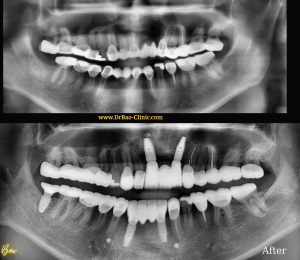DENTAL VENEERS
Veneers are thin shells that cover the front side of teeth. They are used to restore stained teeth, discoloured, deformed or slightly damaged teeth from wearing out. Veneers are mainly placed over front teeth, therefore correcting their contour, colour and size to improve the smile’s appearance.
The materials used to create dental veneers are primarily porcelain and composite:
– A composite veneer can be produced directly, meaning that the dentist builds it directly on the tooth, or indirectly, outside the mouth, usually in a dental laboratory.
– Porcelain veneers are produced only in an indirect way. Porcelain is more aesthetic and more resistant to food stains than composite veneers.

1/ Problems that veneers can fix
Dental veneers are used to either improve the appearance of a tooth. If a tooth is destroyed, or has undergone a root canal, it would be preferable to put a dental crown on it.
Here are some situations where dental veneers are useful:
– To improve the appearance of dark teeth that a previous tooth whitening didn’t make them look whiter.
– To restore teeth worn out moderately, severely worn teeth should be repaired with crowns instead.
– To restore fractured teeth.
– To arrange the appearance of slightly misaligned teeth, although it’s recommended to consider orthodontics first.
– To close diastemas (spaces between teeth), although orthodontics can also be effective.
2/ Advantages of porcelain veneers
– They offer a very natural appearance of a tooth.
– They are resistant to food stains.
– You can select a porcelain colour for teeth to appear whiter.
3/ Maintenance of veneers
– Good oral hygiene must be maintained by brushing teeth and flossing between veneers and all other teeth as well.
– Reducing the use of certain staining foods such as coffee, tea or red wine.
– Veneers last between 8 and 12 years. After that, they should be replaced.
♣ References
- Wikipedia, the free encyclopedia (wikipedia.org).
- WebMD, better information, better health (webmd.com).



